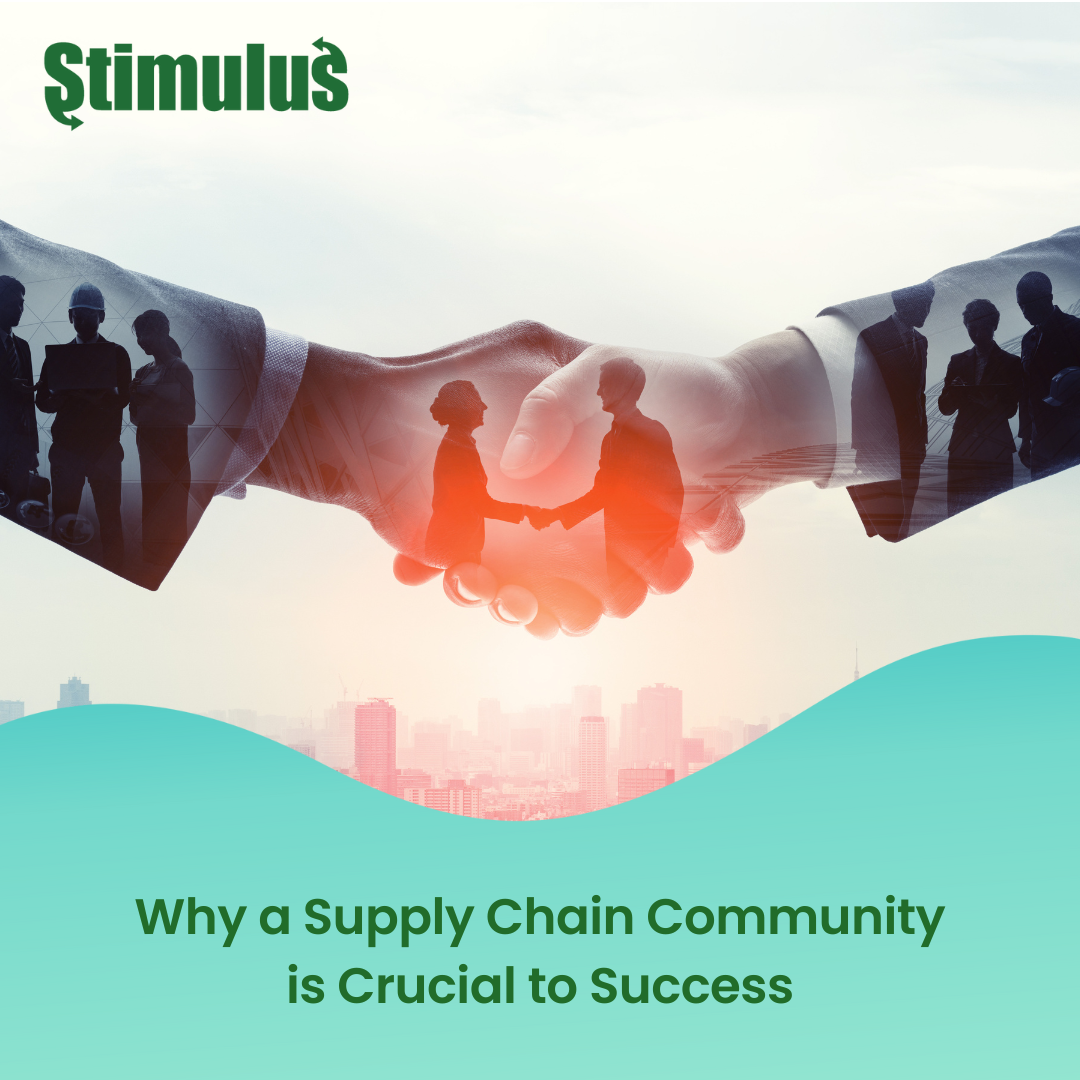Neeharika Damera: Diversity Transcending the Supply Chain Market

There’s a reason why shows like Shark Tank and Dragon’s Den exist — and it’s not solely for entertainment purposes in the slightest. In fact, it’s all about product development and the ability to showcase and deliver your products in ways that actually work. The dilemma many small businesses face is the fact that having a good product is just one part of a successful business’ process. The other elements include a strong supply chain, the right brand image, and the right approach at DEI and communication both with your team and your customers alike.
As the Head of Product at Stimulus, Neeharika Damera plays a major role in the development of Stimulus’ supplier relationship product and the other production and diversity efforts the team works hard to accomplish. Damera is responsible for product strategy, engineering management, and customer success for the Stimulus Relationship Intelligence Platform (SRIP). She serves as a bridge between the core functions within the organization and ensuring that a product is built which is useful, efficient, and intuitive. In the last year, Damera oversaw the launch of the Stimulus SaaS platform and its version 2 likewise. But, to truly see how Neeharika’s leadership and experience can impact the industry and help Stimulus thrive, we sat down with this product management pro to ask her exactly how companies can achieve seamless product, development, and supply chain systems.
A Jack of all Trades — and a Master of Collaboration
Neeharika Damera is a Product Management Professional with over 15 years of experience guiding teams to deliver innovative technology products from conception to launch across different industries. Damera specializes in product planning and execution including gathering and prioritizing product and customer requirements, defining the product vision, and working closely with cross-functional teams to ensure strategic, revenue, and customer satisfaction goals are met.
When asked about her specific background in the industry and beyond, Damera explained, “I have an engineering and computer science background. And after that, I started working in the investment banking services industry. I was supporting this global trading platform and over the years, I did multiple functions like testing, support, analysis, reporting, and client implementations on site. I also trained the operations team on the product as well to customize the product to their requirements, build new features, and work with them.”
The diverse leader also explained how this required a lot of global travel and versatility for her during this time, “I was traveling between London, America, and India for that job. That’s how it started. What I really loved about that job is the fact that it was multifunctional. I was interacting with a lot of different teams to make it work as well as interacting with customers. And at the end of it all, the main thing I enjoyed was finding a problem, identifying the source of that problem, and trying to find how to resolve it to make products that are consistent and high quality.”
However, it wasn’t until she moved to America that she claims she began to find her true potential and versatility, “After this, I moved to the U.S. to do my MBA here, and I was able to leverage that job. I’ve always done product management in one form or another. But, what I realized through my MBA is that it’s easy to translate your learnings and the functional links across multiple sectors. I’ve been able to test it out and take on roles in advertising sales, insurance, cloud management, and now, supplier relationships.”
As a ‘jack of all trades,’ Damera’s experience in multiple parts of a highly functional company makes her a great asset and leader for our team as well as within the supply chain realm overall. This is even one of the things that the leader appreciates about working with Stimulus. As she puts it, “I was excited to join Stimulus as they are trying to solve an interesting problem. The team is really great and I thought the organization was a great fit for my skills and my values.”
Damera also explained how inclusion has played a big part in her development and retention in the company likewise, “It’s been like two plus years, and it’s been really great. Every day is different. The fact that it is a small company means I get to do what I enjoy, and I don’t need to be limited by my role. With stimulus, you’d be surprised to see that we’re roughly 90% diverse — and it’s not diversity for the sake of it. Our team comprises diverse individuals from all backgrounds and varied experiences. This brings great innovation and different perspectives which help in developing a great product.
But, how does this background and dedication to diversity and communication help a product to be truly successful? This is the question we chose to focus on next with the global thought leader.
The Journey of a Successful Product Defined
As Damera explains, the journey of a successful product begins with identifying the core problem we are trying to solve. “Sometimes, it may seem like a surface level problem. For example, in one of my past jobs, one of the problems we faced was the time it took for the team to complete client requests. So, we asked ourselves, ‘Is it because the team does not have enough time to solve the issue or do they need additional training?’ The obvious conclusions would have led to hiring more people or investing in additional resources, but, when you looked into the data and talked with people, it became clear that the issue was truthfully that people were completing the work but not updating the service request. Sometimes, these problems can be as simple as that but without realizing that we end up building solutions that do not solve the right problem.”
Damera also stressed the hierarchy of problem-solving for companies likewise, “The second thing that’s important is asking yourself “Is it worth solving the problem? Are you going to bring value in solving it? What is the measured effort versus the value?” That’s something I always measure because, as a product manager, I have to make so many decisions on a daily basis. And, the value defined could be cost savings, team productivity, transparency etc.”
On the subject of product visibility, Damera also shared, “How do you let the world know about your product? Well, you have to work on your team training, update your user guides, send out any marketing materials you may have, and also communicate new product revisions and exciting updates with your customers. During development, we work with beta users and invite our customers to provide feedback on what we are developing to get early feedback. Iterative development is useful to make sure we are building something that our customers need. If we need to fix/revert it helps as well.”
As for product launch once the item is developed, Damera explained, “First things first, whatever you’re launching, make sure you are testing it completely. The next thing is talking about it with your marketing team and getting eyes on your product. The one thing that product management professionals do very well is we don’t ever become too attached to our current product or features. You might have to go back and redesign some things. And that’s fine. Just because you put so much effort into something doesn’t make it perfect. If it’s not working, you shouldn’t hold on to it at the expense of customer experience.”
Finally, this leader explained how other leaders should approach product development and launches to find success, “For leadership, there’s always a balance that must be met between time, cost, and speed. You can’t have all three at the same time. If you want to have a quality product in a short time, you need to invest in the resources. Meanwhile, If you want something at a lower price, it’s going to take long. I make sure I communicate this to my leadership teams as well to set expectations. I don’t want to over promise and stress out my team, and neither should other leaders.”
Although the production and launch process may be defined more clearly, it still doesn’t explain how a strong supply chain can affect these processes. To do that, we turned to Damera for a closer look at how her experience relates to our industry specifically.
The Dire Impact of a Faulty Supply Chain
A faulty supply chain can completely destroy a brand’s image, product quality, and customer satisfaction in no time. As Damera put it in our interview, “It’s like a bunch of moving parts that make up a machine. During the pandemic, even the most seemingly small products like hand sanitizer and toilet paper couldn’t be found and that had a major impact on our society. It just goes to show that even the most menial of products in our minds can affect us greatly when a supply chain is disrupted. This is one of the things which we are hoping to fix at Stimulus. If you have good relationships with suppliers, it helps your supply chain to be healthy.”
Damera also shared the issue with companies right now choosing what is safe over what is most effective. Far too many companies are only changing suppliers when their suppliers shut down or drop them. This affects companies greatly, “Some companies are still in reactionary mode. In order to be proactive, you need to have multiple alternatives for every part of your supply chain.”
However, the insightful industry expert also shared a silver lining to these disruptions in the supply chain, “The pandemic also highlighted the impact of buying local. Being far away geographically from suppliers added to the supply chain chaos. So, there has been an increased interest in buying local, and, with Stimulus, we are hoping to help companies create better local relationships and develop healthier supply chains in the process.”
Although this product leader may have a lot of insights into the production and development side of business, her insights into diversity and global impact are just as impressive. To see what we mean, read on about her thoughts on the power of diversity in business and beyond.
The Power of Diversity in Business and Beyond
As Damera shared, her intro into product management was hardly as diverse and inclusive as it is now, “Product management, when I started, was highly male-dominated, but I’m happy that there are a lot of women in product management and leadership positions across big organizations now. Naturally, women like multitasking and are capable of handling and working with teams. We can easily move from one task to another. You need to be flexible, adaptive, and capable of putting out multiple fires at once. In that way, I’m happy about the progress that’s been made in terms of the industry.”
For Damera specifically, her passion she hopes to fulfill in order to continue to impact the industry is helping others to fulfill their own career dreams, “The one thing I want to do more of is mentorship. I want to give guidance and advice as this mentorship once helped me make decisions in my professional career.”
She also explained how she hopes that companies will allow more people to grow into product management positions in the future, “There is no degree for product management. As such, it’s very hard to identify who’s a good product manager. Sometimes, companies expect previous experience in order for people to get the next job up in their careers in the product management field. I wish organizations would be more open to diverse skill sets. I think there are layers to this role, and people can grow into it. It’s not something you need to have completely under control from day one. You can start with your current skill set and grow into the role over time to offer a unique perspective to the company.”
Another topic that is near and dear to Damera’s heart is the importance of diversity and inclusion in a business setting and beyond, “ Diversity makes the best business sense, honestly. By diversity, I don’t mean based on your skin color or your gender specifically either. ‘Diverse’ could be purely based on the backgrounds you come from and the experiences you have lived. Each person brings a layer — and only when you have that in a company can you cater to your diverse customer base. If your company doesn’t look like your customers, then there’s no way you’ll be capable of helping your customers in a custom and aligned manner.”
Another aspect of diversity that Damera covered is the diversity in work environments and the pros of having remote team members on your team, “One exciting development related to my role is the fact that remote work has become so common. It used to be assumed that you need to be in an office to be productive, but I think it’s clear now that you can still be productive remotely. This automatically opens up the talent pool and helps companies recognize that you don’t need to be limited by somebody who could commute to the office. This also helps families connect, which will help with the overall mental health and well-being of the employees.”
The final topic that we chose to break down with this future-driven and highly experienced product management asset was what the future of the supply chain and diversity initiatives might look like. This is where her experience and vision truly shined through.
The Future is Clear — and It’s Diversely Data-Driven
As Damera explained, data is bound to play a major role in the future of product development and supply chain management alike, “I think there will be an emphasis on data-driven decisions, not only in the execution, but also in identifying suppliers, digitizing communications, and making sure suppliers don’t have to reach out to companies and different departments multiple times for potential projects. Using technology in that way will help us to be more streamlined.”
The product management pro also explained why one true source for data was highly important, “ If you have all this information in one place, and you don’t have multiple systems for accessing data, it leads to productivity, efficiency, and cost savings. Your team can focus on actually making decisions as opposed to trying to find data. You might think you’re investing a lot upfront in software to improve your data management, but if it is organized, you’ll see a return on investment in no time through good data and its impact.”
Lastly, Damera explained why a diverse networking system is vital for inclusion and equal opportunity moving forward, “Let’s say I’m looking for a landscaping company. If I don’t think there are any minority or women-owned companies, I may just choose a less diverse and more easily accessible option. The fact that we have the data at Stimulus to connect people is really helpful, and sure to help create a more egalitarian future too. People make decisions out of comfort, but now, we need to make decisions using data. A lot of other industries already have taken that approach — the intention is there. Companies want to do the right thing. To do this, they must be willing to take the first step and break their bias. That’s how the future becomes equal and more successful.”
All in all, Neeharika Damera’s experience and insights provide Stimulus and its customers with a more diverse and productive future free from bias and production roadblocks alike. We are pleased to have her on our team and look forward to many more years working together on the Stimulus product initiatives and beyond. To learn more about the Stimulus Relationship Intelligence Platform (SRIP) that Damera helped launch successfully, check out getstimulus.io today.
.png)

.png)
.png)
